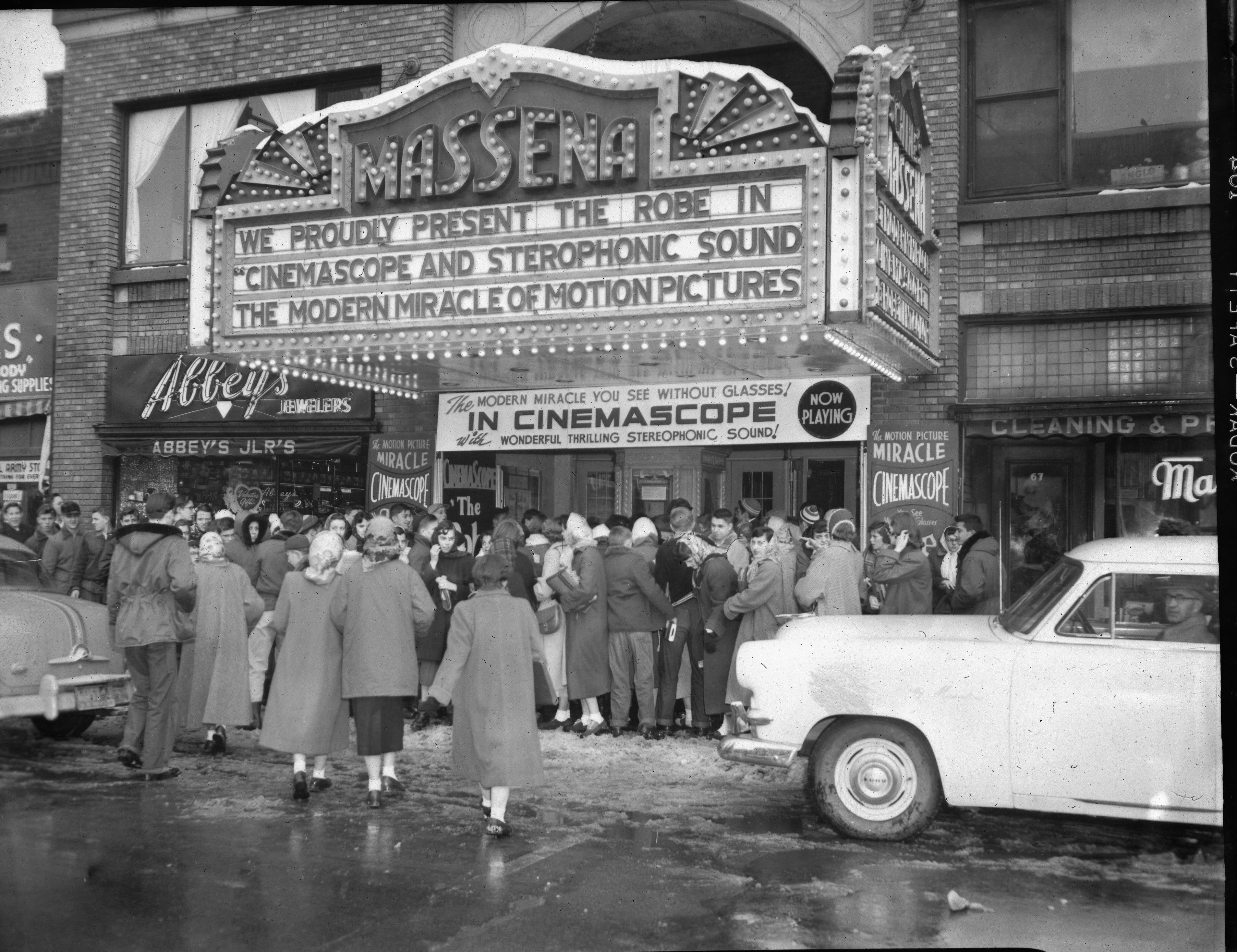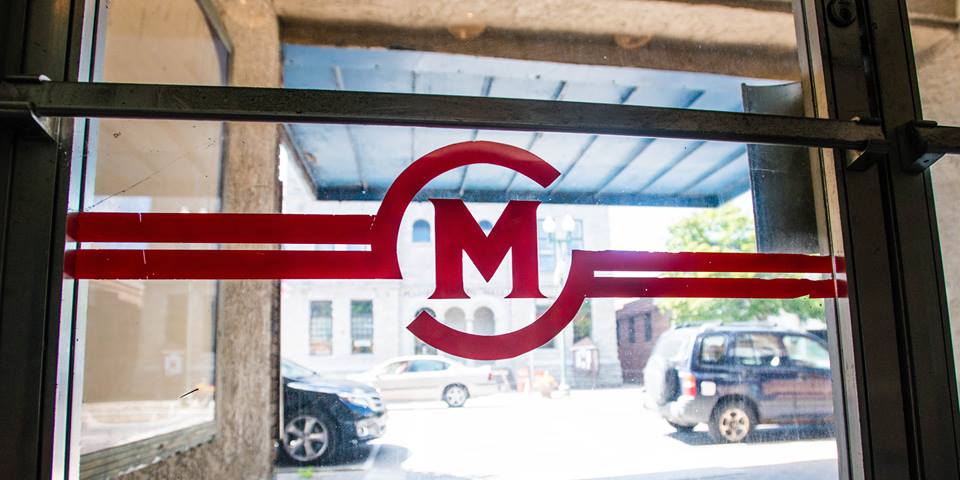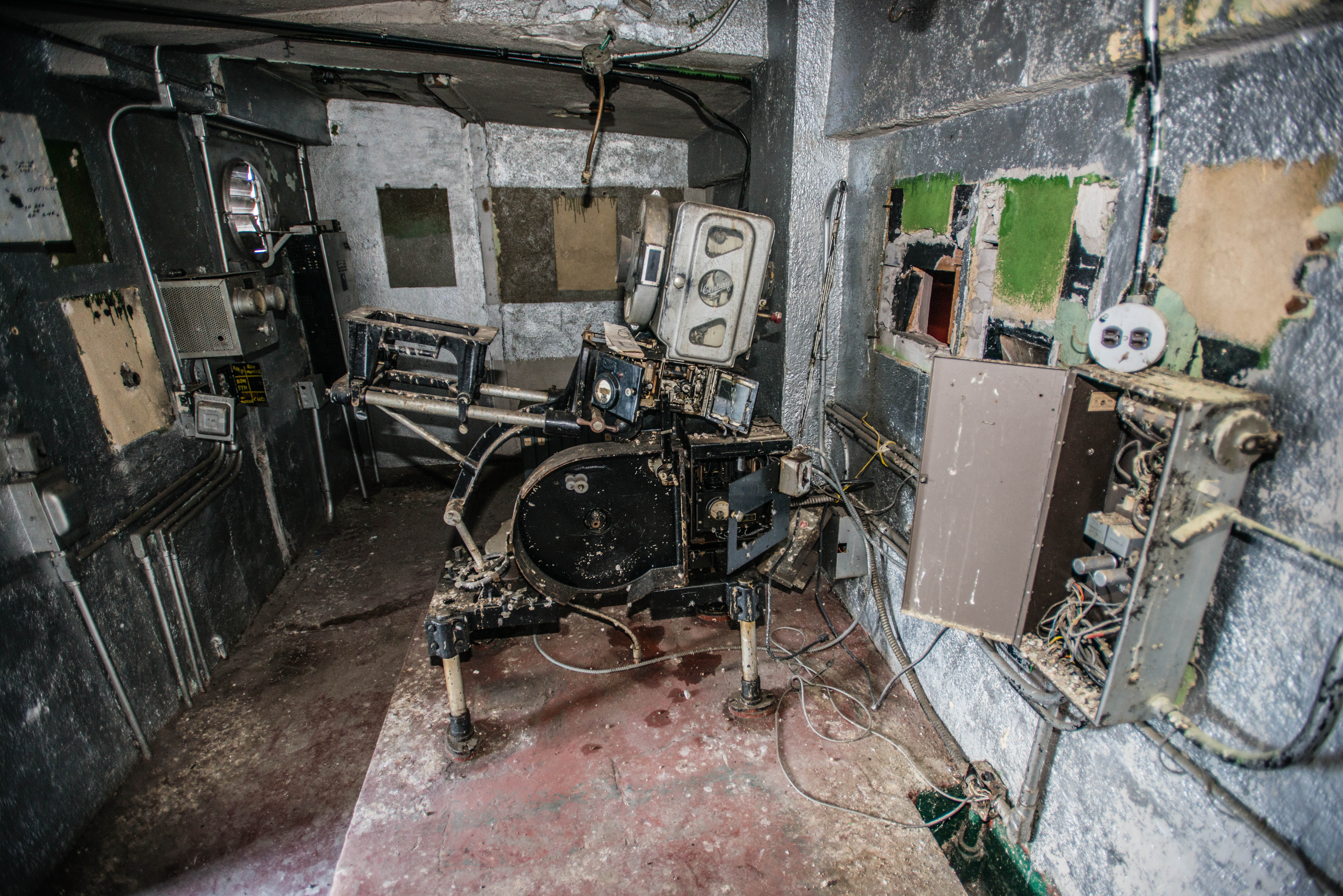
About The Theater
The Wonderland Theater was very small and so, in 1913, Mr. Warren began construction of a 500-seat theater across the street next to the Opera House (now the Massena Town Hall). The “Star Theater” opened on June 28, 1913. This theater also proved too small for the Town’s needs and so, once again, Mr. Warren purchased the property across the street and began erecting the present Theatre. The new Strand Theater opened in November 1918 and seated 1,200 people.
The primary use of this structure was as a theater (primarily a movie theatre) from 1918 until it closed in 1995. The majority of the square footage of this building was dedicated to the Theatre with two secondary store fronts on either side of the main entrance. The store fronts still exist and are currently occupied.
The building was constructed in the “Brick Commercial” or “Brick Vernacular” style common in commercial architecture of the early twentieth century. It is of plain design with a flat roof. The facade
We envision the theater as the cultural and social hub of the community; a place where people will come to be both entertained and educated.
The building is covered with a masonry veneer that features original serrated brick colored in a variegated pattern of browns and oranges with granite and natural stone accents. The brick course pattern is referred to as “Flemish Bond”.
The brickwork boasts several decorative features. These include three recessed brick panels, just below the roofline, that correspond with the theatre entrance and two storefronts directly below. Above the first story and below the two second story windows there are two additional recessed panels accented with natural stone corners directly above the two auxiliary store fronts. A third panel at this level with more stone ornamentation serves as a parapet for the balcony directly above the marquee. The ornamental granite details include a moderate projecting cornice and a multi-tiered granite frieze or fascia that runs the length of the structure above the balcony style recessed porch and second story windows. The second story sash windows have natural stone sills. There is a decorative granite arch above the balcony with classically designed keystone and carved details. There is also a granite rail on the parapet. The building has natural stone cornerstones and bases for the theatre entrance pilasters. Below the balcony the cantilevered steel frame remains that holds the marquee (the marquee is in storage and is being restored). This steel frame has original iron chain supports.
The recessed exterior foyer has four stainless steel and glass entrance/exit doors. There is a plate glass transom above the doors. This glass and steel entrance has its original recessed panel wood framing. This foyer has stucco finished walls and a stucco vaulted ceiling with two small globe lights. The entry floor has slate tile. Attached to walls in this foyer are two large movie poster display cases. They appear to be aluminum that has been painted gold. On either side of the theatre foyer entrance are two smaller movie poster display cases. They face the street and have a similar finish to the larger cases.
The two storefronts are finished with identical windows and doors. One store has the original wooden door with plate glass. The plate glass display windows retain their original wooden frames. The wooden sign board backdrops appear to be original as well. The two storefronts have brick bulkheads or knee walls below the display windows.
In the early 1960’s, the theater was redecorated by the new owners, the Wein – Helmsley Partnership, with very plain monochrome plaster walls and ceiling to reflect the tastes of the day. The subsequent owners made very few changes to the interior or exterior of the building. The theater still has the remnants of that most recent renovation.







